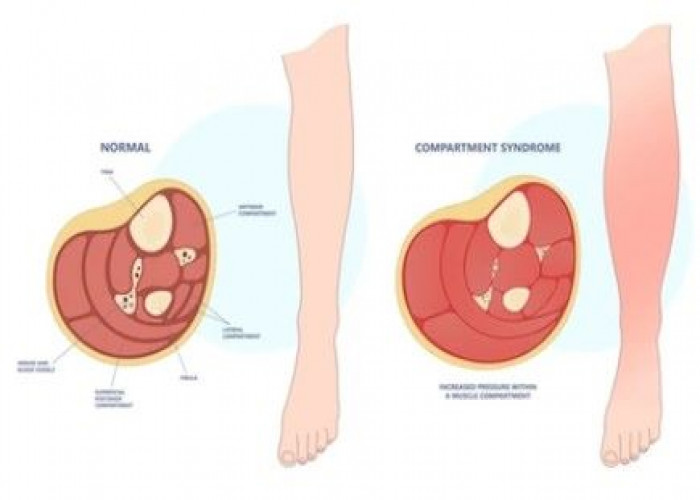 Welcome
Welcome
“May all be happy, may all be healed, may all be at peace and may no one ever suffer."
Chronic exertional compartment syndrome

Chronic exertional compartment syndrome is a condition in which pressure within a muscle compartment in the arms or legs increases during physical activity. This increased pressure can cause pain, cramping, and sometimes numbness or weakness in the affected muscles. The exact cause of chronic exertional compartment syndrome is not well understood, but it is thought to be related to the buildup of pressure within the muscle compartment due to exercise or other physical activity. Treatment for chronic exertional compartment syndrome typically involves modifying physical activity, such as reducing the frequency or intensity of exercise, as well as physical therapy and/or surgery in some cases. If you experience symptoms of chronic exertional compartment syndrome, it is important to see a healthcare provider for an accurate diagnosis and appropriate treatment.
Research Papers
Disease Signs and Symptoms
- Limb pain
- Over time, recovery time after exercise may increase
- Becomes less intense or stops completely within 15 minutes of stopping the activity
- Aching, burning or cramping pain in a compartment of the affected limb
- Swollen leg
- Swollen arms or hands
- Weakness
- Weakness and numbness in arms
- Numbness
- Once take up running again, for instance, those familiar symptoms usually come back.
Disease Causes
Chronic exertional compartment syndrome
The cause of chronic exertional compartment syndrome isn't completely understood. When you exercise, your muscles expand in volume. If you have chronic exertional compartment syndrome, the tissue that encases the affected muscle (fascia) doesn't expand with the muscle, causing pressure and pain in a compartment of the affected limb.
Some experts suggest that how you move while exercising might have a role in causing chronic exertional compartment syndrome. Other causes might include having muscles that enlarge excessively during exercise, having an especially inflexible fascia surrounding the affected muscle compartment or having high pressure within your veins.
Disease Prevents
Disease Treatments
Options to treat chronic exertional compartment syndrome include both nonsurgical and surgical methods. However, nonsurgical measures are typically successful only if you stop or greatly reduce the activity that caused the condition.
Nonsurgical options
Your doctor may initially recommend pain medications, physical therapy, athletic shoe inserts (orthotics), massage or a break from exercise. Changing how you land on your feet when you jog or run also might be helpful. However, nonsurgical options typically don't provide lasting benefit for true chronic exertional compartment syndrome.
Injections of botulinum toxin A (Botox) into the muscles of the leg may also help treat chronic exertional compartment syndrome, but more research needs to be done on this treatment option. Your doctor may use numbing injections beforehand to help map the affected area and determine what Botox dose is needed.
Surgical options
A surgical procedure called fasciotomy is the most effective treatment of chronic exertional compartment syndrome. It involves cutting open the inflexible tissue encasing each of the affected muscle compartments. This relieves the pressure.
Sometimes, a fasciotomy can be performed through small incisions, which may reduce recovery time and allow you to return to your regular sport or activity sooner.
Although surgery is effective for most people, it's not without risk and, in some cases, it may not completely alleviate symptoms associated with chronic exertional compartment syndrome. Complications of the surgery can include infection, permanent nerve damage, numbness, weakness, bruising and scarring.
Disease Diagnoses
Disease Allopathic Generics
Disease Ayurvedic Generics
Disease Homeopathic Generics
Disease yoga
Chronic exertional compartment syndrome and Learn More about Diseases

Hypoplastic left heart syndrome

Ehrlichiosis and anaplasmosis

Measles

Radiation enteritis

Acute flaccid myelitis (AFM)

Peptic ulcer

Skin cancer

Esthesioneuroblastoma
Chronic exertional compartment syndrome, Exertional compartment syndrome, দীর্ঘস্থায়ী এক্সটারেশনাল কম্পার্টমেন্ট সিন্ড্রোম
To be happy, beautiful, healthy, wealthy, hale and long-lived stay with DM3S.
